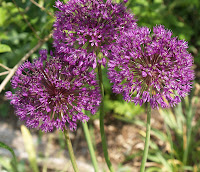- Nitrogen (N) - for leafy growth
- Phospherous (P) - for root development
- Potassium (K) - for flowers and fruit production
I personally use formulated (inorganic) general purpose fertilizers. The equivalent organic general purpose fertilizer is blood, fish and bone mixes.
I personally use both slow release granules and soluble quick release formulated general purpose fertilizers.
However, if you are going to buy one fertilizer, I recommend buying a soluble quick release general purpose fertilizer for all your garden needs.
I also recommend always following the instructions on the fertilizer packaging.
For more good plants and gardening tips, please use the 'SEARCH THIS BLOG' function (right) or click here: http://greenshootsgardeningandhorticulture.blogspot.com/






















